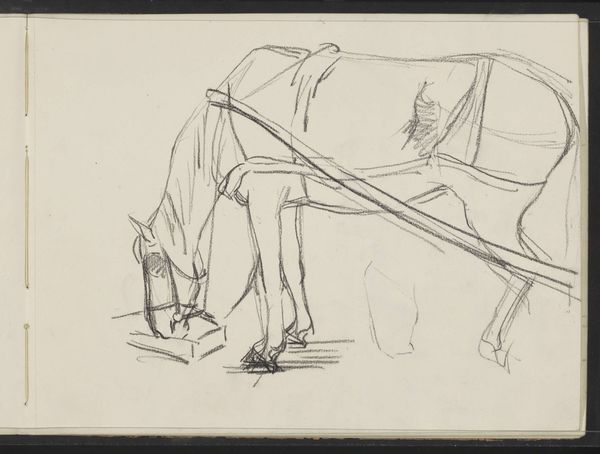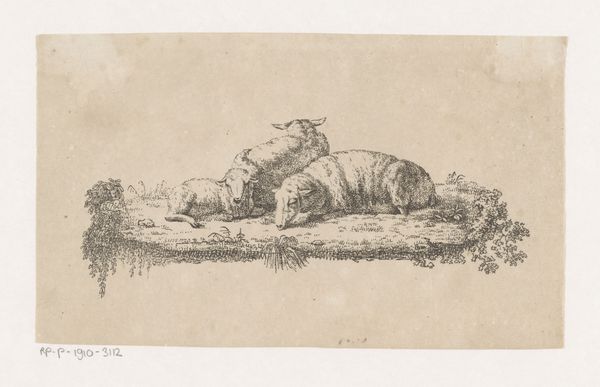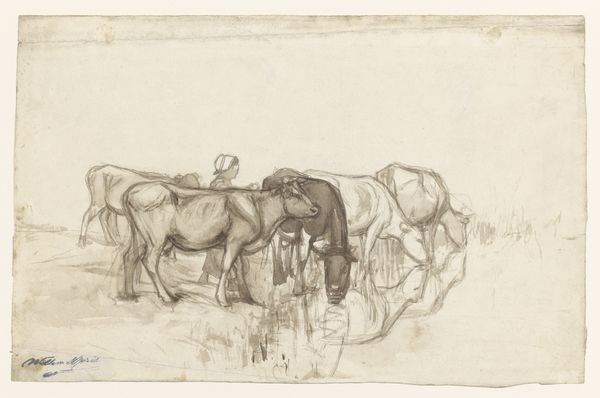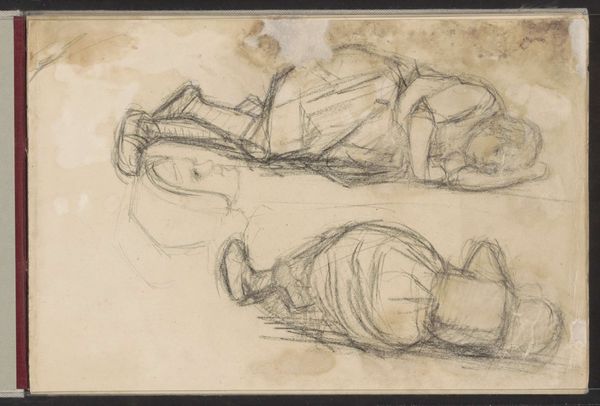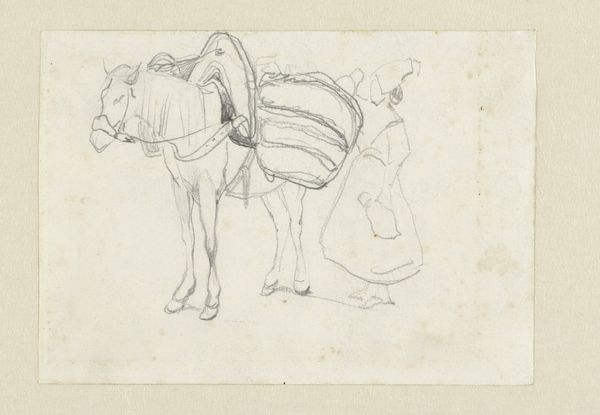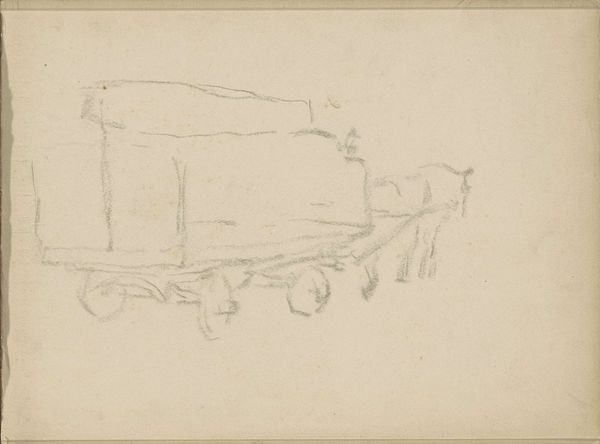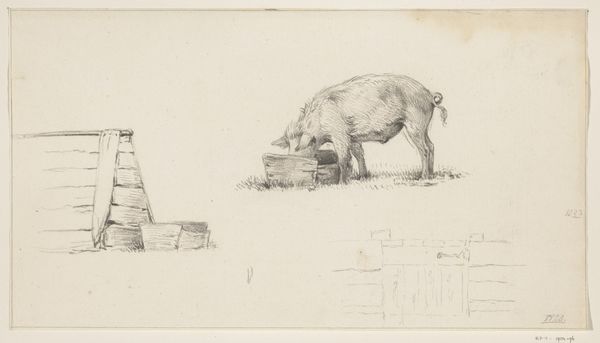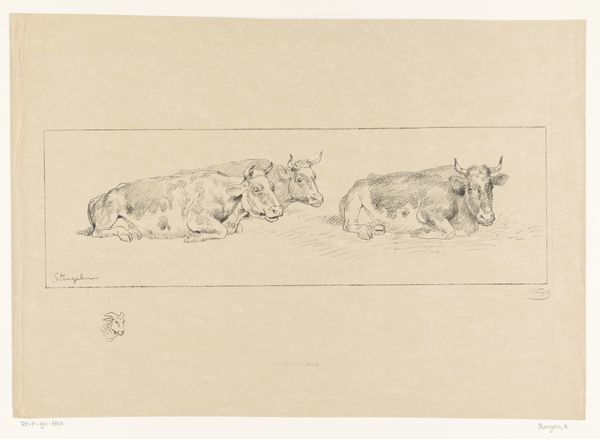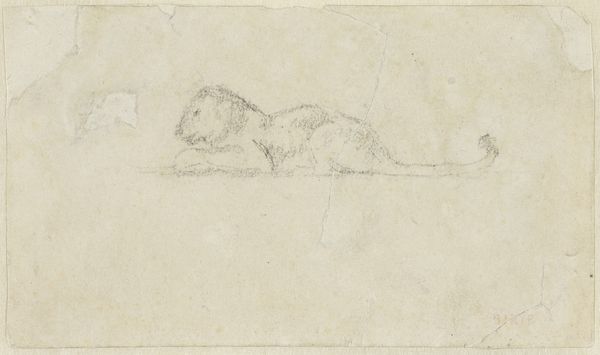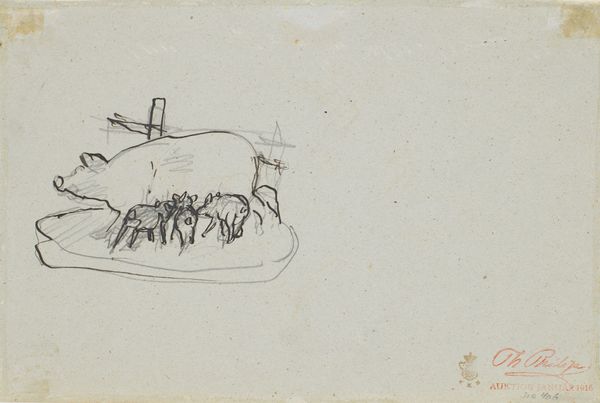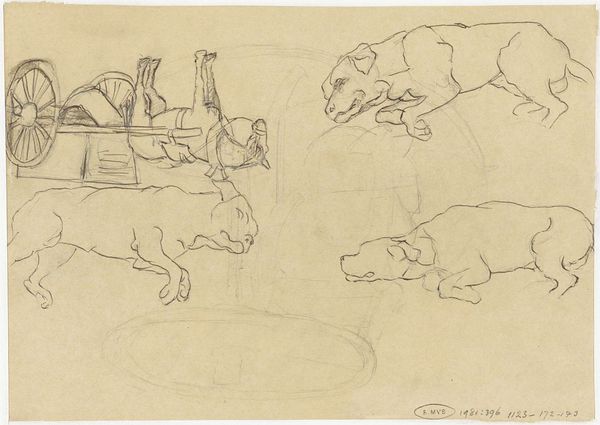
drawing, pencil, chalk, graphite
#
drawing
#
pencil sketch
#
landscape
#
figuration
#
romanticism
#
pencil
#
chalk
#
15_18th-century
#
graphite
#
realism
Copyright: Public Domain
Curator: This intriguing sketch, titled "Zwei Ochsen neben einem Karren"—"Two Oxen Beside a Cart"—is attributed to Friedrich Wilhelm Hirt. Editor: My first thought is one of pastoral fatigue. There's a weariness captured in the slump of the ox closest to us. The sketch itself, its fragility, amplifies that feeling. Curator: Indeed. Hirt uses the subtlety of pencil, chalk, and graphite to define not just form, but texture. Note the meticulous detailing on the cart's structure contrasting with the looser rendering of the animals' musculature. The cart and the animals both exhibit texture from hatching with layered graphite and pencil lines. Editor: For me, oxen have always symbolized patient labor, and that connection is reinforced here. They appear subdued, almost melancholic. Perhaps they represent a deeper symbol of man's relationship to nature: the endless cycle of toil. This cycle of the beast harnessed in support of man also hints at a much earlier period. Curator: An interesting observation! Consider also the formal placement of the cart. Centered, yet somewhat fading, drawing our eye instead to the beasts. A compositional tension, perhaps hinting at the waning importance of traditional agrarian life during that period? Editor: Perhaps, or perhaps it’s the suggestion of quiet dignity amidst inevitable burden. There’s a vulnerability here; you can feel their very bones beneath the sketchwork. A timeless representation. Curator: Ultimately, Hirt has composed a poignant representation using minimal forms, a powerful statement on nature and labour. The interplay of light and shadow in this study breathes a somber awareness. Editor: I concur, an image pregnant with subdued sentiment. The ox forever burdened by work for man.
Comments
No comments
Be the first to comment and join the conversation on the ultimate creative platform.

